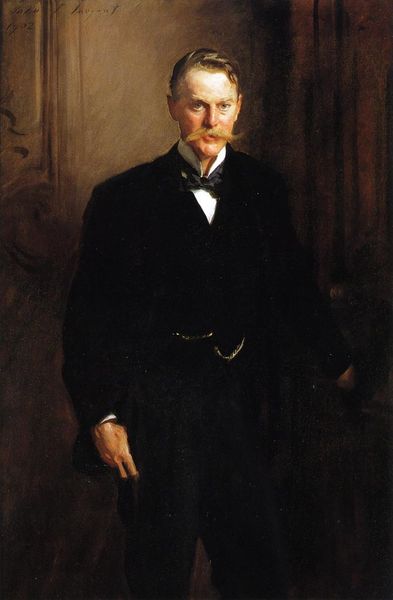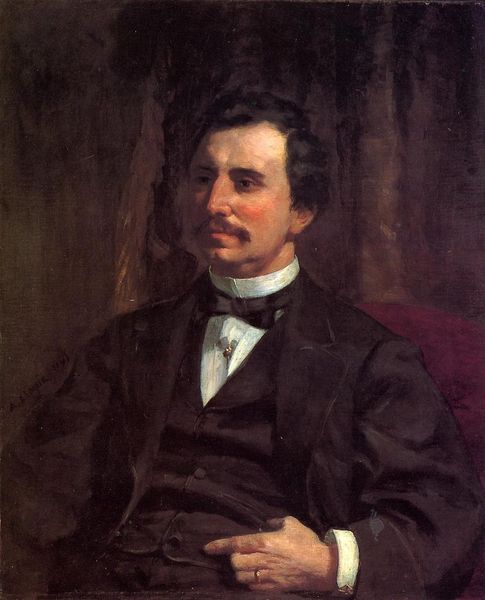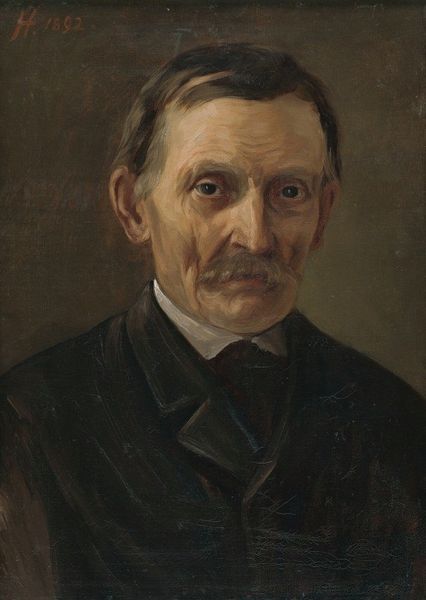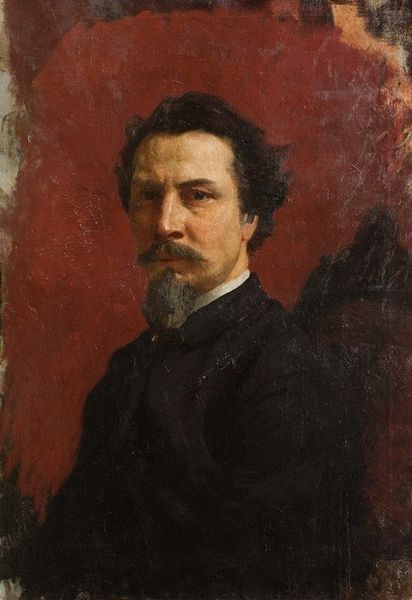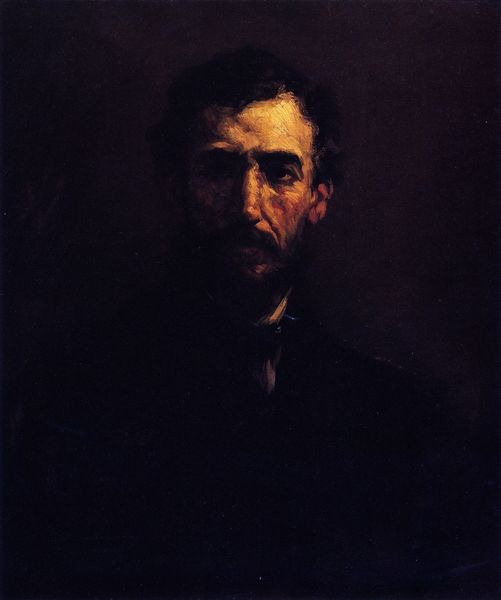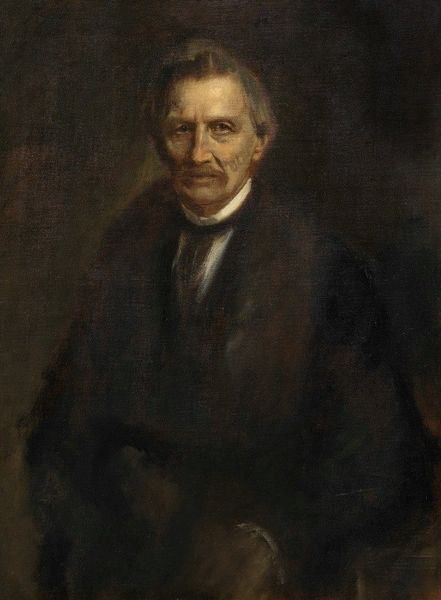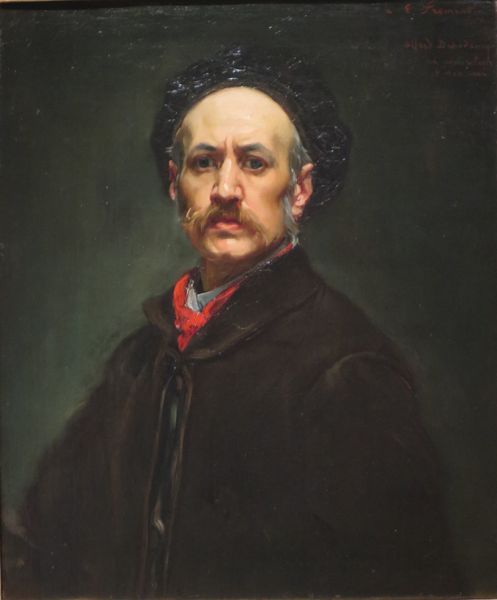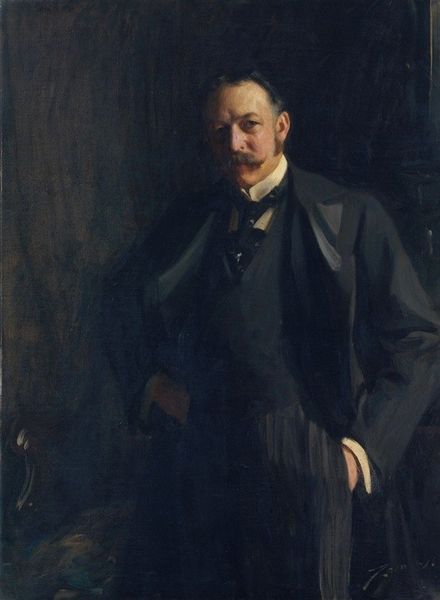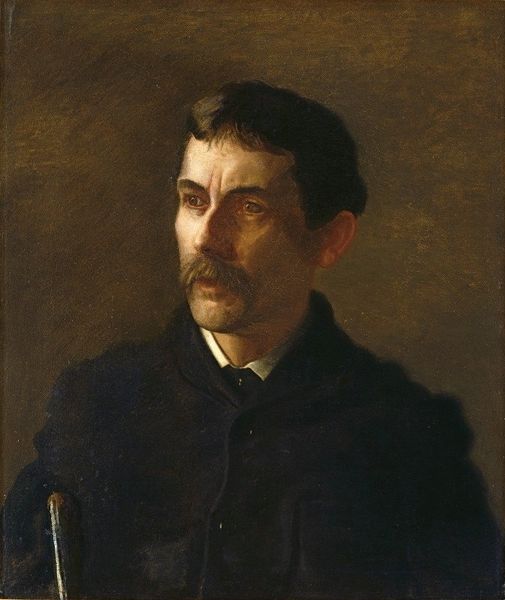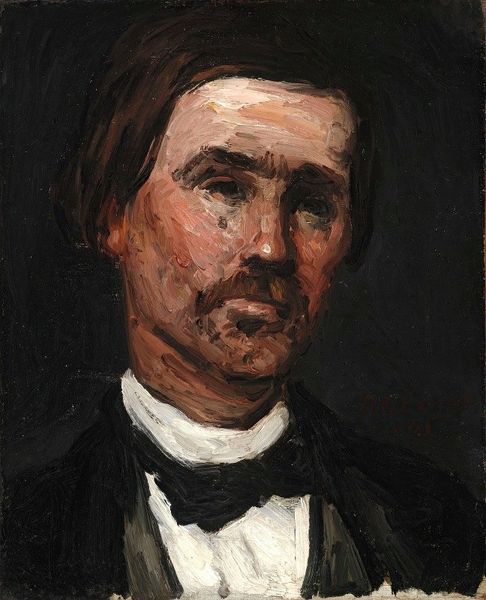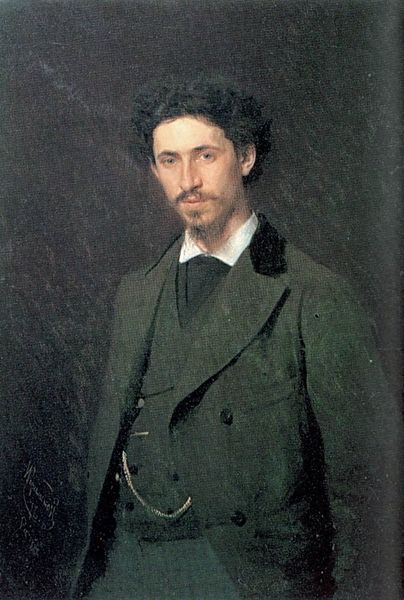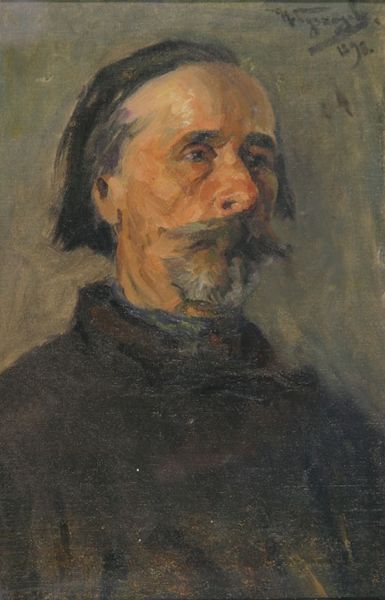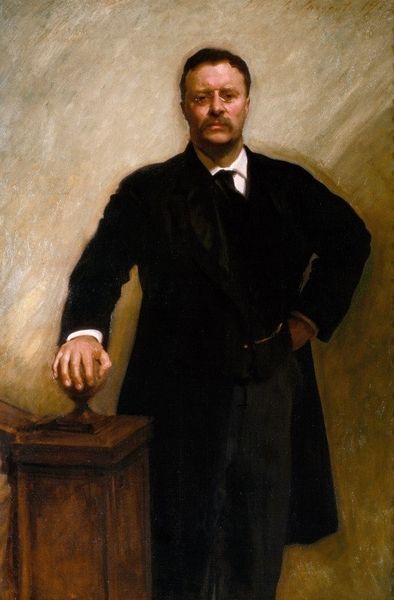
Dimensions: support: 1257 x 914 mm
Copyright: CC-BY-NC-ND 4.0 DEED, Photo: Tate
Editor: Here we have a portrait of Sir Henry Thompson by John Everett Millais, housed at the Tate. The somber palette gives it a rather formal, serious tone. What social dynamics were at play here? Curator: Well, portraiture of this era was often a tool for solidifying social standing. How does this image reinforce or perhaps challenge the viewer's assumptions about Victorian masculinity and power? Editor: I hadn't thought about it that way, seeing how the painting may be challenging or reinforcing those social standards. Curator: Exactly. Consider how Thompson's gaze and attire, while conventional for the time, also subtly assert his authority. It's about unpacking those layers of representation. Editor: It provides a lot more depth when seeing it through this lens. Thanks! Curator: My pleasure! I'm glad this analysis was helpful.
Comments
tate 9 months ago
⋮
http://www.tate.org.uk/art/artworks/millais-sir-henry-thompson-bt-n01941
Join the conversation
Join millions of artists and users on Artera today and experience the ultimate creative platform.
tate 9 months ago
⋮
This portrait was bequeathed to the Tate Gallery in 1904 by the sitter, Sir Henry Thompson (1820–1904), a surgeon whose speciality was the removal of bladder stones. Napoleon III, Emperor of France (1808–1873), was among his patients. In addition to his career as a surgeon, Thompson dabbled in a variety of other professions, including astronomy, writing (he was the author of two novels) and painting. He studied painting under the tutelage of Lawrence Alma Tadema (1836–1912) and Alfred Elmore (1815–1881) and between 1865 and 1885 showed a number of his pictures at the Royal Academy. Thompson’s portrait was among the commissions for portraits of major public figures which Millais began to take regularly from about 1871. Other sitters included the poet Alfred, Lord Tennyson (1809–1892) and the British Prime Ministers, Benjamin Disraeli (1804–1881) and William Ewart Gladstone (1809–1898).
